
The Majestic Wilderness of Torres del Paine National Park
Discover the breathtaking beauty of Torres del Paine National Park in Argentina, a paradise for adventurers and nature enthusiasts in the heart of Patagonia.
Nestled in the heart of Patagonia, Torres del Paine National Park is a wonderland of stunning landscapes and diverse wildlife. This UNESCO Biosphere Reserve offers a unique blend of rugged mountains, glowing blue glaciers, and serene lakes. It is a haven for hikers, photographers, and nature lovers seeking an unforgettable adventure. The park is renowned for its iconic granite towers, which stand tall against the vibrant Patagonian sky. Visitors can explore various trails, ranging from short walks to the famous W Trek, which takes you through some of the park's most breathtaking scenery. Along the way, you may encounter guanacos, foxes, and even the elusive puma. Whether you're trekking through the dense forests, marveling at the immense Grey Glacier, or simply soaking in the views of the crystal-clear lakes, Torres del Paine promises an experience like no other. Its pristine beauty and untamed wilderness make it a must-visit destination for anyone traveling to Argentina.
Local tips in Torres del Paine National Park
- Best time to visit is from October to April when the weather is milder and the days are longer.
- Pack layers of clothing as the weather can change quickly and dramatically.
- Bring a good pair of hiking boots as the trails can be rugged and challenging.
- Book accommodations and guided tours in advance, especially during peak season.
- Carry sufficient water and snacks, as facilities within the park are limited.
When is the best time to go to Torres del Paine National Park?
Iconic landmarks you can’t miss
Mylodon Cave Natural Monument
Discover the ancient wonders of Mylodon Cave Natural Monument, a breathtaking national park revealing the prehistoric secrets of Patagonia.
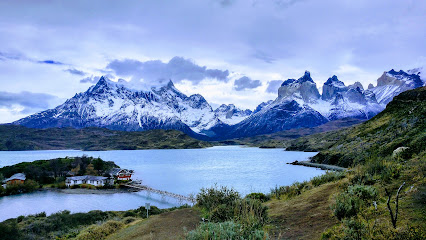
La Mano
Discover La Mano, an evocative sculpture in Puerto Natales, Chile, symbolizing the connection between humanity and the breathtaking Patagonian landscape.

Mirador Base Las Torres
Experience the stunning beauty of the granite towers at Mirador Base Las Torres in Torres del Paine National Park, a must-visit for every nature lover.
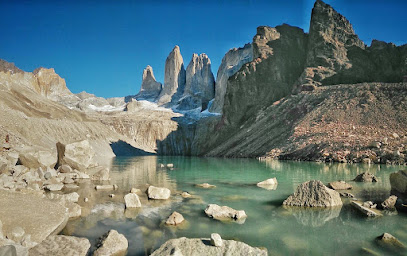
Hotel Lago Grey - Torres del Paine Chile
Experience the beauty of Patagonia at Hotel Lago Grey, your gateway to the stunning landscapes of Torres del Paine National Park.
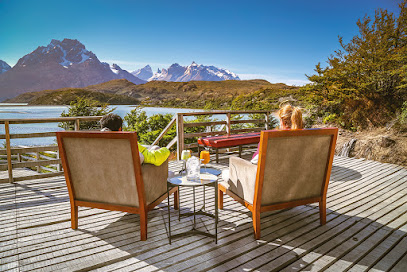
Muelle Historico
Discover the breathtaking beauty of Muelle Historico in Puerto Natales, where stunning views and rich culture converge in the heart of Patagonia.
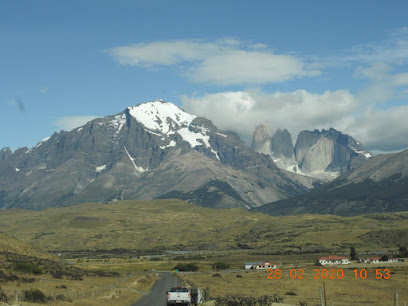
Torres del Paine Welcome Center
Explore the Torres del Paine Welcome Center, your gateway to adventure in Patagonia's stunning national park, rich in natural beauty and cultural heritage.
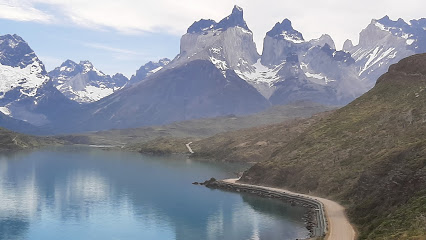
Cascada Rio Paine
Experience the breathtaking beauty of Cascada Rio Paine, a stunning waterfall in Torres del Paine National Park, Chile's unparalleled natural wonder.
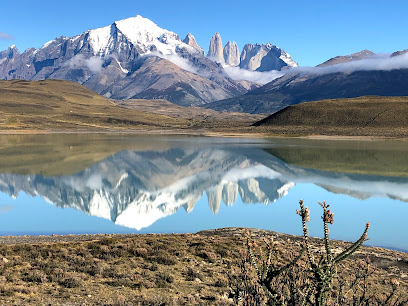
Salto Grande Lookout
Discover the stunning views and natural beauty at Salto Grande Lookout, a must-visit destination in Torres del Paine National Park, Chile.
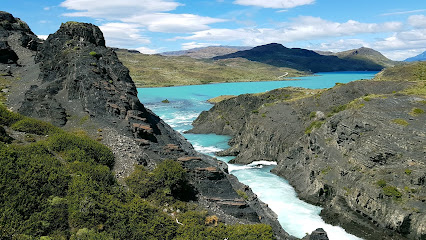
río serrano hotel + spa
Experience the beauty of Patagonia at Río Serrano Hotel + Spa, your luxurious base for adventures in Torres del Paine National Park.
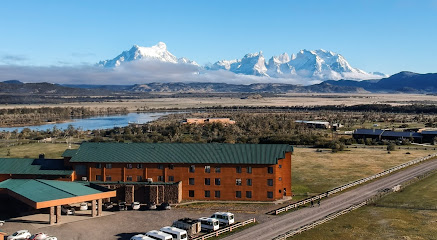
Acceso serrano parque torres del paine
Explore the breathtaking landscapes of Torres del Paine National Park from the stunning Acceso Serrano, a gateway to adventure in Chilean Patagonia.
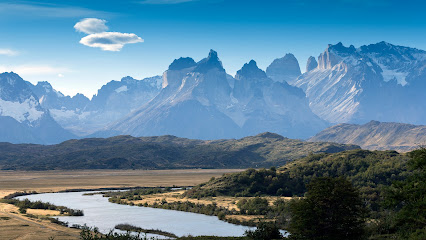
Hosteria Pehoe
Discover the tranquil beauty of Hosteria Pehoe, your gateway to the stunning landscapes of Torres del Paine National Park in Chilean Patagonia.

Refugio Chileno
Experience the breathtaking beauty of Torres del Paine at Refugio Chileno, your perfect lodge for adventure and relaxation in Chile.
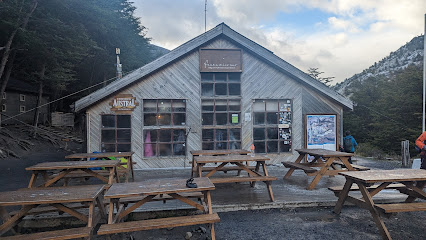
Monumento al viento
Discover the stunning Monumento al Viento in Puerto Natales, a breathtaking tribute to nature's strength surrounded by Patagonia's unparalleled beauty.
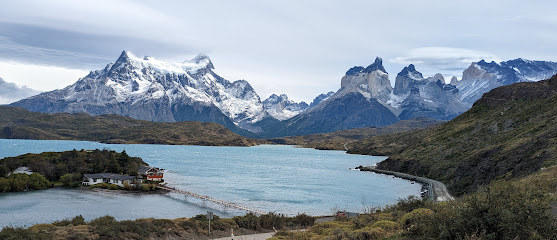
Refugio & Camping Vertice Paine Grande
Experience the breathtaking beauty of Torres del Paine at Refugio & Camping Vertice Paine Grande, your gateway to Patagonian adventures.

Hotel Las Torres Patagonia
Discover the enchanting landscapes of Torres del Paine from the comfort of Hotel Las Torres Patagonia, where luxury meets nature in perfect harmony.
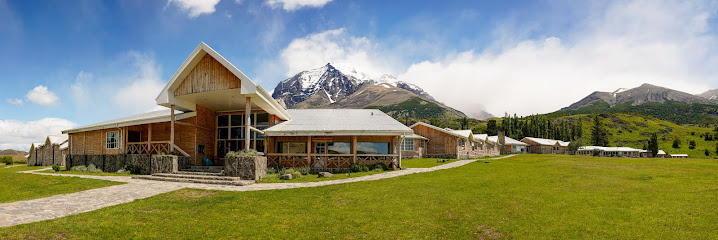
Unmissable attractions to see
Mylodon Cave Natural Monument
Discover the Mylodon Cave Natural Monument, a breathtaking national park showcasing Chile's prehistoric wonders and stunning natural beauty.

Punta Walichu - Reserva Natural y Arqueológica
Explore the enchanting Punta Walichu, where ancient rock art meets stunning Patagonian landscapes, perfect for cultural and nature enthusiasts alike.
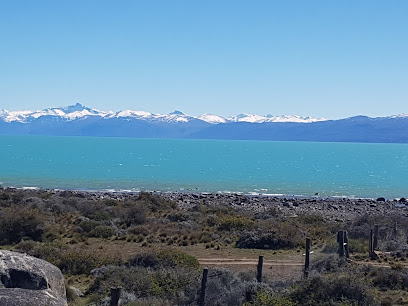
La Mano
Experience the breathtaking La Mano sculpture in Puerto Natales, a unique blend of art and nature in the heart of Patagonia.
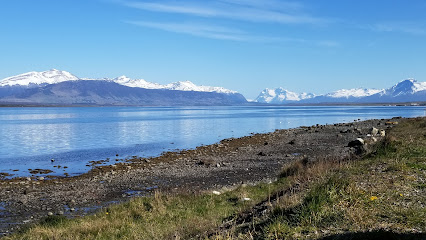
Mirador Base Las Torres
Experience breathtaking views at Mirador Base Las Torres, a must-visit observation deck in Torres del Paine National Park, Chile.

Guarderia Grey
Experience the breathtaking landscapes of Guarderia Grey in Torres del Paine National Park, the heart of Patagonia's natural beauty and adventure.

Reserva Nacional Cerro Castillo
Discover the breathtaking landscapes and rich wildlife of Reserva Nacional Cerro Castillo, a hidden gem in Chile's Aysén region.
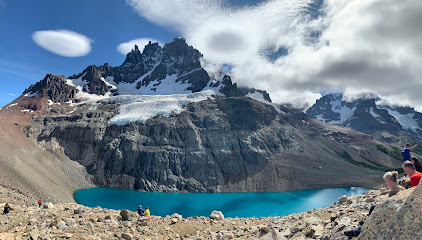
Guarderia Grey
Explore the enchanting landscapes of Guarderia Grey in Torres del Paine National Park, a must-visit destination for nature lovers and adventurers alike.
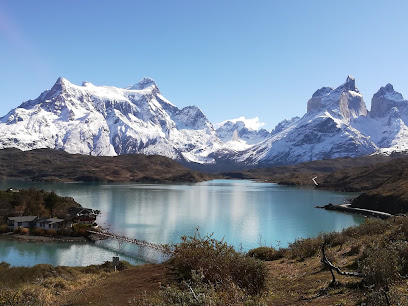
Torres del Paine Welcome Center
Discover the gateway to Patagonia's breathtaking landscapes at Torres del Paine Welcome Center, your essential hub for outdoor adventures in Chile.

Muelle Historico
Explore Muelle Historico in Puerto Natales, where stunning coastal views meet rich history and vibrant local culture in the heart of Patagonia.
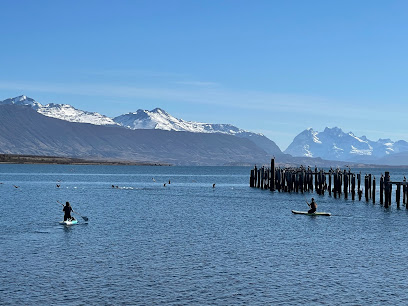
Cascada Rio Paine
Explore the breathtaking Cascada Rio Paine in Torres de Paine, a spectacular waterfall surrounded by stunning landscapes and rich wildlife.
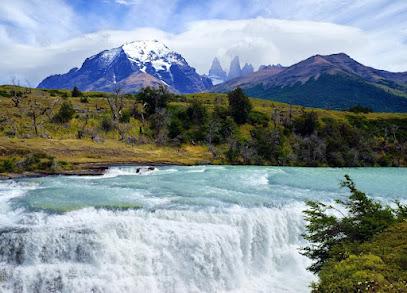
Mirador Nordenskjöld Lake
Experience the breathtaking views of Mirador Nordenskjöld Lake in Torres del Paine National Park, a haven for nature lovers and photographers alike.

Mirador Nordenskjöld Lake
Experience the stunning beauty of Mirador Nordenskjöld Lake in Torres del Paine National Park, Chile, where nature's grandeur awaits every visitor.
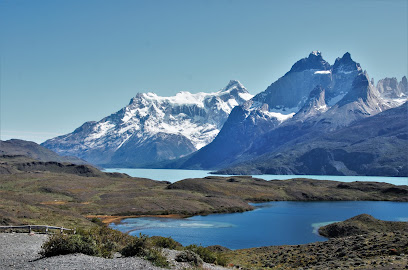
Cascada Rio Paine
Explore the stunning Cascada Rio Paine in Torres del Paine National Park, a breathtaking waterfall surrounded by majestic landscapes and rich wildlife.
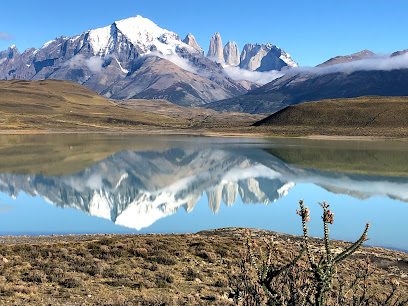
Acceso serrano parque torres del paine
Explore Torres del Paine National Park, a breathtaking destination with towering peaks, vibrant lakes, and rich wildlife in Chilean Patagonia.
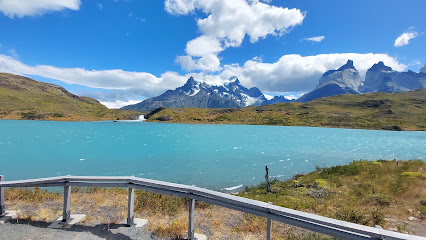
Tolhuaca National Park
Explore the majestic landscapes and rich biodiversity of Tolhuaca National Park in Araucania, Chile, a haven for nature enthusiasts and adventure seekers.
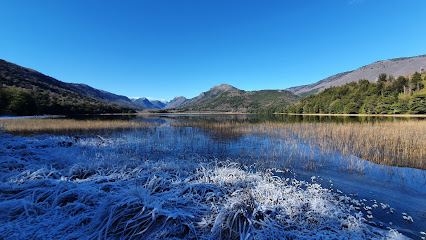
Essential places to dine
Torres del Paine National Park
Explore Torres del Paine National Park: A breathtaking paradise of mountains, glaciers, and wildlife in Chilean Patagonia.
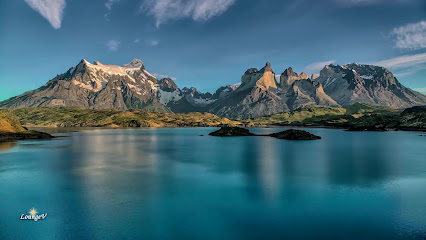
Mirador Base Las Torres
Experience breathtaking panoramic views at Mirador Base Las Torres in Chile's stunning Torres del Paine National Park.
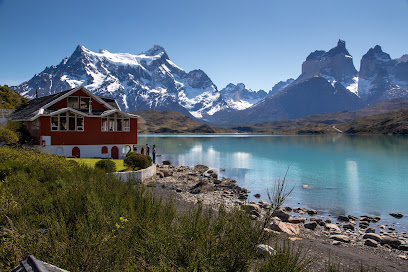
Hotel Lago Grey - Torres del Paine Chile
Experience luxury amidst nature at Hotel Lago Grey - your gateway to Torres del Paine's stunning landscapes and adventures.
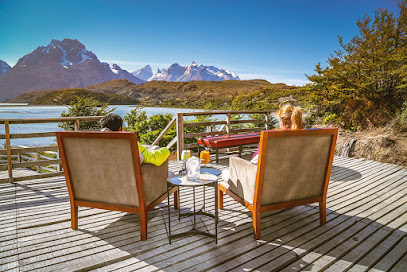
Salto Grande Lookout
Experience unparalleled natural beauty at Salto Grande Lookout in Torres del Paine National Park - a true gem of Patagonia.
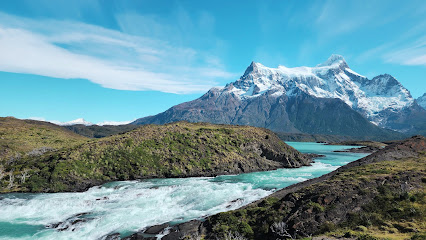
El Asador Patagónico
Discover authentic Patagonian cuisine at El Asador Patagónico in Puerto Natales - a culinary journey through flavors and tradition.
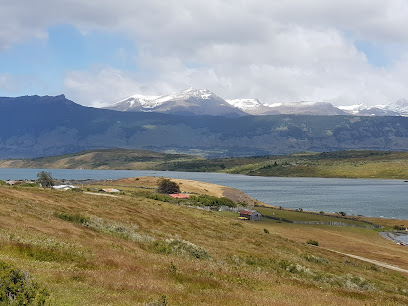
río serrano hotel + spa
Experience unparalleled luxury amidst the stunning landscapes of Patagonia at Río Serrano Hotel + Spa near Torres del Paine National Park.
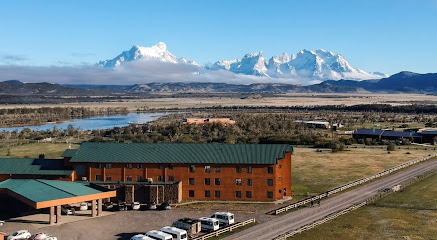
Hosteria Pehoe
Experience breathtaking views and cozy comfort at Hosteria Pehoe in Torres del Paine National Park, your gateway to Patagonia's wonders.

Santolla
Discover exquisite seafood dishes at Santolla in Natales - where every meal is a celebration of Chile's culinary heritage.
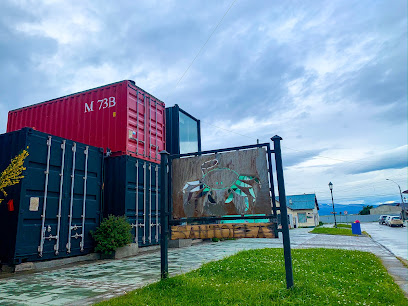
Cafe Kaiken
Discover authentic Chilean flavors at Cafe Kaiken in Puerto Natales - where every meal tells a story.
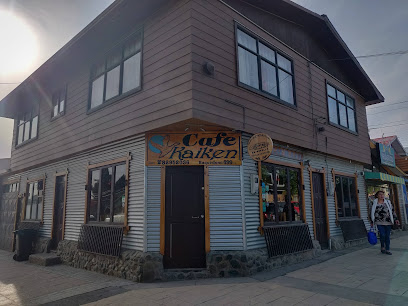
Hotel Las Torres Patagonia
Discover nature's masterpiece at Hotel Las Torres Patagonia - your gateway to adventure in Torres de Paine National Park.
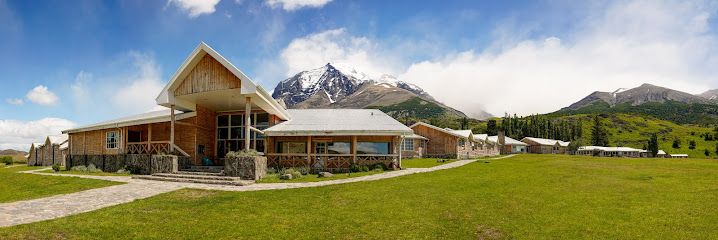
Cangrejo Rojo
Experience authentic Chilean cuisine at Cangrejo Rojo in Puerto Natales, where local flavors meet stunning views.

Explora Patagonia Hotel Salto Chico
Experience unparalleled luxury amidst the breathtaking landscapes of Torres del Paine at Explora Patagonia Hotel Salto Chico.
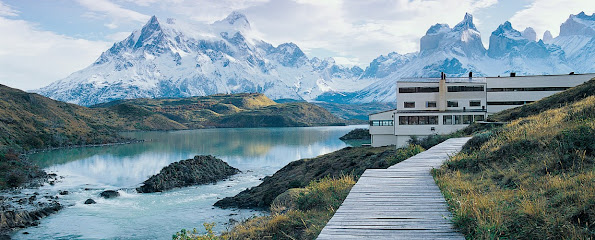
EcoCamp Patagonia
Discover EcoCamp Patagonia: An eco-friendly lodge nestled in Torres del Paine National Park offering unforgettable adventures amidst breathtaking landscapes.
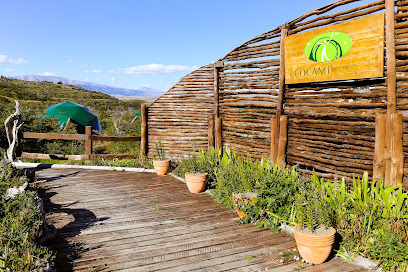
Tierra Patagonia Hotel & Spa
Discover luxury amidst nature at Tierra Patagonia Hotel & Spa near Torres del Paine National Park.

Restaurant Pehoe Barbecue
Experience authentic Patagonian barbecue amidst breathtaking landscapes at Restaurant Pehoe in Torres de Paine National Park.

Markets, malls and hidden boutiques
Torres del Paine National Park
Explore the breathtaking landscapes of Torres del Paine National Park, a natural wonder in Chile, famous for its stunning mountains and diverse wildlife.
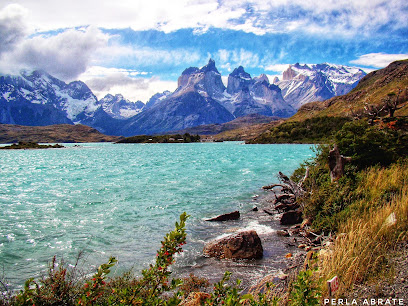
Fire Walk Shopping Center
Explore shopping, dining, and stunning views at Ushuaia's Fire Walk Shopping Center, the perfect destination for tourists and locals alike.
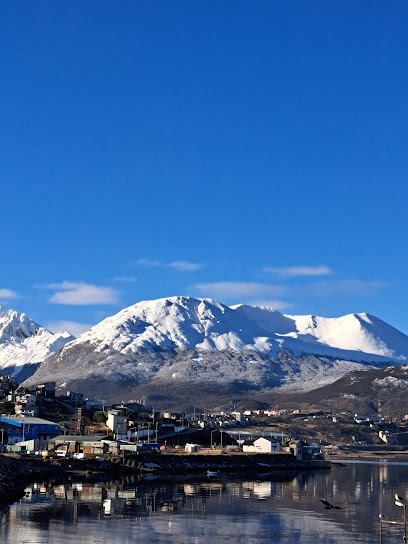
Mylodon Cave Natural Monument
Explore Mylodon Cave Natural Monument, a stunning national park showcasing prehistoric history and breathtaking natural landscapes in Chile.
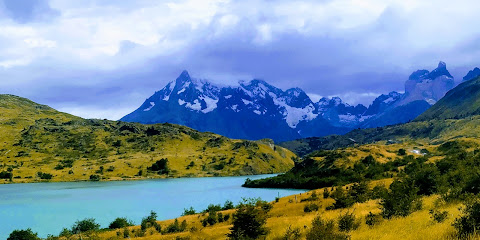
La Mano
Discover La Mano, an iconic sculpture in Puerto Natales, bridging art and nature amidst the stunning landscapes of Patagonia, Chile.
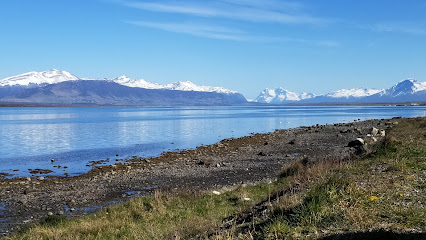
Mirador Base Las Torres
Discover breathtaking views and iconic landscapes at Mirador Base Las Torres in Torres del Paine National Park.
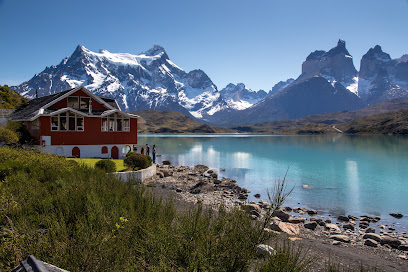
Hotel Lago Grey - Torres del Paine Chile
Discover the beauty of Patagonia at Hotel Lago Grey, where luxury meets nature in Torres del Paine.
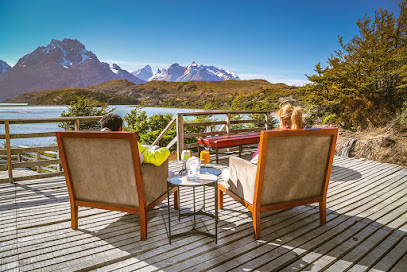
Torres del Paine Welcome Center
Explore Torres del Paine National Park from the iconic Welcome Center, your gateway to nature's wonders and thrilling adventures.
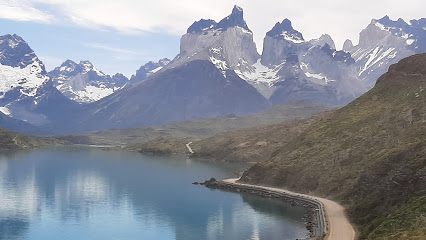
Cascada Rio Paine
Discover the breathtaking beauty of Cascada Rio Paine, a stunning waterfall in Torres del Paine National Park, Chile, surrounded by majestic landscapes.
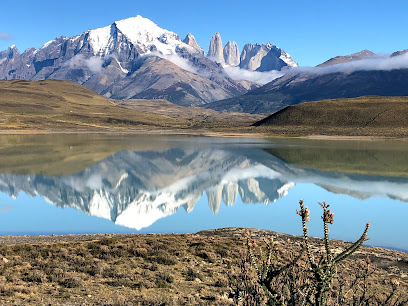
Salto Grande Lookout
Discover the stunning vistas at Salto Grande Lookout, a must-visit destination in Torres del Paine National Park, Chile, showcasing nature's grandeur.
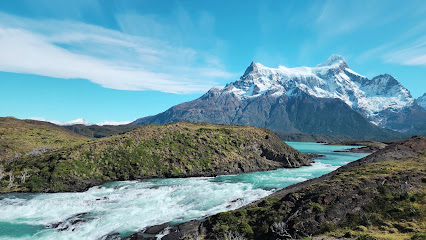
río serrano hotel + spa
Discover the luxury of Río Serrano Hotel + Spa, where breathtaking nature meets unmatched comfort in the heart of Patagonia.
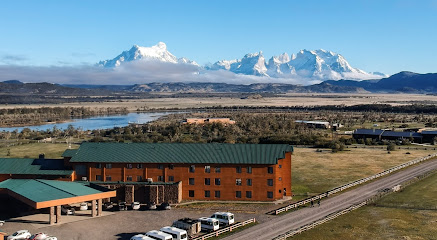
Hosteria Pehoe
Discover the stunning beauty of Torres del Paine at Hosteria Pehoe, your gateway to adventure amidst breathtaking landscapes.

Refugio Chileno
Explore the stunning landscapes of Torres del Paine from the comfort of Refugio Chileno, the perfect lodge for nature enthusiasts.
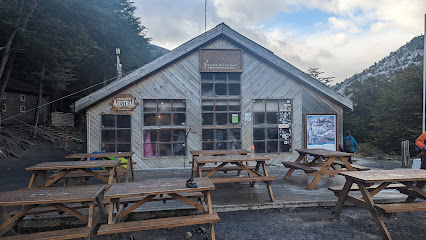
Last Hope Distillery
Experience the artisanal spirits of Patagonia at Last Hope Distillery, a must-visit destination in Puerto Natales, Chile for all travelers.

W Circuit - Trekking in Patagonia
Discover the stunning W Circuit in Patagonia, where majestic mountains and pristine nature create an unforgettable trekking experience.
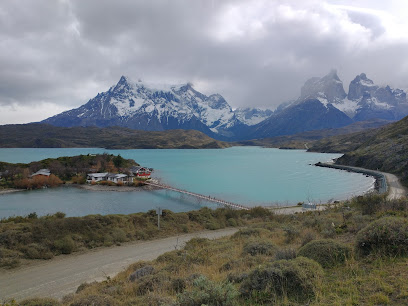
Hotel Las Torres Patagonia
Discover the beauty of Patagonia and enjoy an unforgettable stay at Hotel Las Torres, your gateway to Torres del Paine National Park.
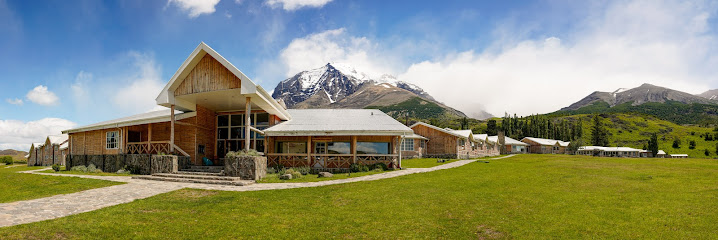
Essential bars & hidden hideouts
Torres del Paine National Park
Explore the breathtaking beauty of Torres del Paine National Park, a UNESCO Biosphere Reserve in Chile, perfect for adventure and nature lovers.
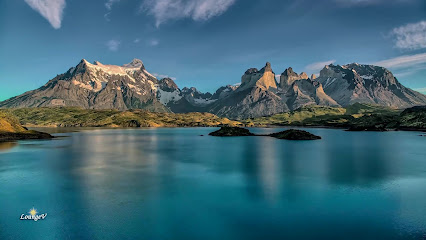
Mirador Base Las Torres
Discover the stunning beauty of Torres del Paine at Mirador Base Las Torres, a breathtaking observation deck showcasing iconic granite formations.
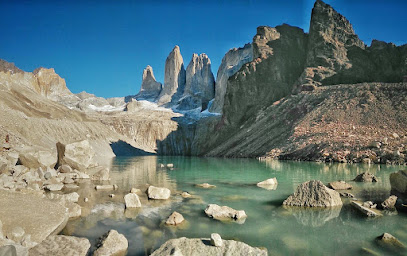
Hotel Lago Grey - Torres del Paine Chile
Experience the breathtaking beauty of Torres del Paine at Hotel Lago Grey, where comfort meets nature's grandeur in Chile.
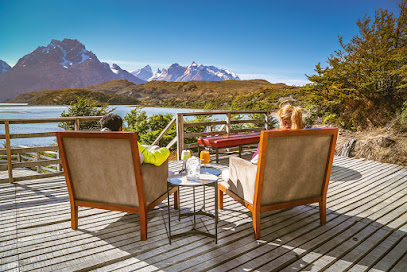
Torres del Paine Welcome Center
Discover the breathtaking beauty of Torres del Paine National Park at the Welcome Center, your gateway to Patagonian adventures and stunning landscapes.

Cascada Rio Paine
Experience the breathtaking beauty of Cascada Rio Paine, a stunning waterfall in Torres del Paine National Park, Chile, where nature's wonders await.
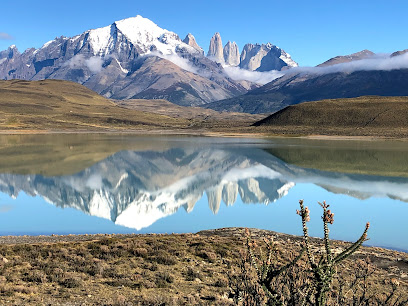
Bourbon Smokehouse
Discover the best of local flavors at Bourbon Smokehouse, a premier gastropub in El Chaltén, where delicious cuisine meets stunning Patagonian scenery.
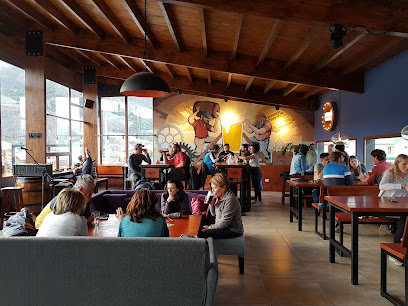
Salto Grande Lookout
Experience the stunning views and natural beauty at Salto Grande Lookout in Torres del Paine National Park, Chile.
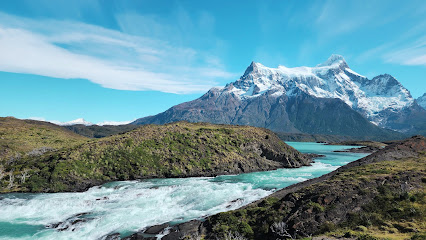
río serrano hotel + spa
Experience the charm of Patagonia at Río Serrano Hotel + Spa, your perfect base for exploring Torres del Paine National Park's stunning landscapes.
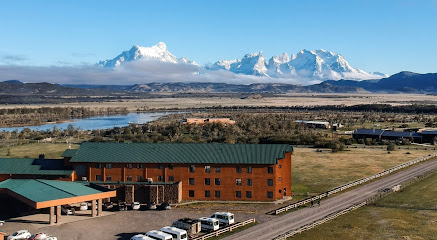
Hosteria Pehoe
Discover the tranquility of Hosteria Pehoe, a scenic hotel in Torres del Paine National Park, surrounded by breathtaking natural beauty.

Last Hope Distillery
Discover Last Hope Distillery in Puerto Natales: A haven for craft spirits, cocktails, and local culture in the heart of Patagonia.
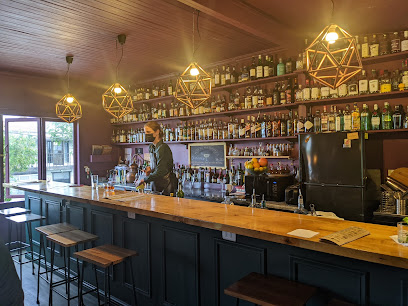
Refugio & Camping Vertice Paine Grande
Discover the breathtaking beauty of Torres del Paine at Refugio & Camping Vertice Paine Grande, your base for Patagonian adventures.

Hotel Las Torres Patagonia
Discover the breathtaking beauty of Torres de Paine at Hotel Las Torres Patagonia, where nature meets comfort and adventure awaits.
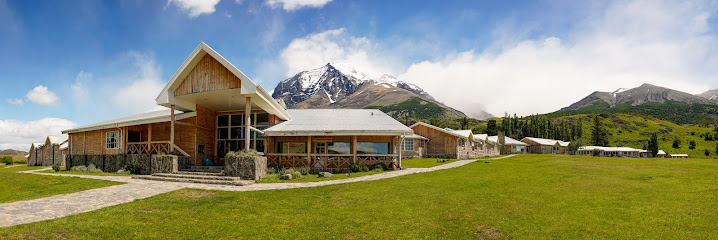
Mirador Lago Grey
Explore the breathtaking beauty of Mirador Lago Grey in Torres de Paine National Park, where stunning glacier views await amidst pristine wilderness.
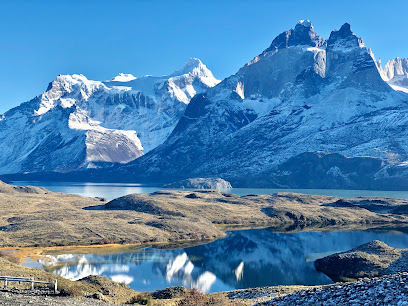
Cordillera del Paine
Explore the breathtaking Cordillera del Paine, a UNESCO Biosphere Reserve in Chile, featuring stunning mountains, diverse wildlife, and unforgettable hiking trails.
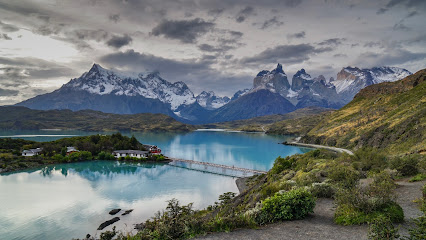
Explora Patagonia Hotel Salto Chico
Experience the ultimate blend of luxury and adventure at Explora Patagonia Hotel Salto Chico in the breathtaking Torres del Paine National Park.
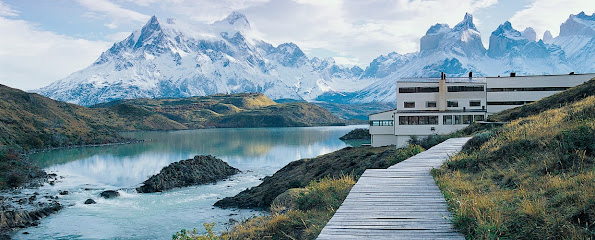
Local Phrases about Torres del Paine National Park
-
- HelloHola
[oh-lah] - GoodbyeAdiós
[ah-dyohs] - YesSí
[see] - NoNo
[noh] - Please/You're welcomePor favor/De nada
[por fah-vor/de nah-dah] - Thank youGracias
[grah-syahs] - Excuse me/SorryPerdón/Disculpa
[pehr-dohn/dees-kool-pah] - How are you?¿Cómo estás?
[koh-moh ehs-tahs] - Fine. And you?Bien. ¿Y tú?
[byehn. ee too] - Do you speak English?¿Hablas inglés?
[ah-blahs een-glehs] - I don't understandNo entiendo
[noh ehn-tyen-doh]
- HelloHola
-
- I'd like to see the menu, pleaseMe gustaría ver el menú, por favor
[meh goos-tah-ree-ah vehr ehl meh-noo, por fah-vor] - I don't eat meatNo como carne
[noh koh-moh kahr-neh] - Cheers!¡Salud!
[sah-lood] - I would like to pay, pleaseMe gustaría pagar, por favor
[meh goos-tah-ree-ah pah-gahr, por fah-vor]
- I'd like to see the menu, pleaseMe gustaría ver el menú, por favor
-
- Help!¡Ayuda!
[ah-yoo-dah] - Go away!¡Vete!
[veh-teh] - Call the Police!¡Llama a la Policía!
[yah-mah ah lah poh-lee-see-ah] - Call a doctor!¡Llama a un médico!
[yah-mah ah oon meh-dee-koh] - I'm lostEstoy perdido/a
[ehs-toy pehr-dee-doh/dah] - I'm illEstoy enfermo/a
[ehs-toy ehn-fehr-moh/dah]
- Help!¡Ayuda!
-
- I'd like to buy...Me gustaría comprar...
[meh goos-tah-ree-ah kohm-prahr] - I'm just lookingSolo estoy mirando
[soh-loh ehs-toy meer-ahn-doh] - How much is it?¿Cuánto cuesta?
[kwan-toh kwehs-tah] - That's too expensiveEso es demasiado caro
[eh-soh ehs deh-mah-syah-doh kah-roh] - Can you lower the price?¿Puedes bajar el precio?
[pweh-dehs bah-hahr ehl pree-syoh]
- I'd like to buy...Me gustaría comprar...
-
- What time is it?¿Qué hora es?
[keh oh-rah ehs] - It's one o'clockEs la una
[ehs lah oo-nah] - Half past (10)Media hora (10)
[meh-dee-ah oh-rah (diez)] - MorningMañana
[mah-nyah-nah] - AfternoonTarde
[tahr-deh] - EveningNoche
[noh-cheh] - YesterdayAyer
[ah-yehr] - TodayHoy
[oy] - TomorrowMañana
[mah-nyah-nah] - 1Uno
[oo-noh] - 2Dos
[dohs] - 3Tres
[trehs] - 4Cuatro
[kwah-troh] - 5Cinco
[seen-koh] - 6Seis
[says] - 7Siete
[syeh-teh] - 8Ocho
[oh-choh] - 9Nueve
[nweh-veh] - 10Diez
[dyehs]
- What time is it?¿Qué hora es?
-
- Where's a/the...?¿Dónde está...?
[dohn-deh ehs-tah] - What's the address?¿Cuál es la dirección?
[kwal ehs lah dee-rehk-syohn] - Can you show me (on the map)?¿Puedes mostrarme (en el mapa)?
[pweh-dehs mohs-trar-meh (ehn ehl mah-pah)] - When's the next (bus)?¿Cuándo es el próximo (autobús)?
[kwan-doh ehs ehl prohk-see-moh (ow-toh-boos)] - A ticket (to ....)Un boleto (a ....)
[oon boh-leh-toh (ah)]
- Where's a/the...?¿Dónde está...?
History of Torres del Paine National Park
-
Long before Torres del Paine became a national park, the area was inhabited by the indigenous Tehuelche people. They left behind significant archaeological evidence, including cave paintings and stone tools. The Tehuelche lived as nomadic hunters, adapting to the harsh climate and rugged terrain of the Patagonian steppe.
-
The first Europeans to set eyes on the Torres del Paine region were Spanish explorers in the 16th century. However, it wasn't until the late 19th century that more detailed explorations were conducted by scientists and adventurers. Notably, British explorer Lady Florence Dixie documented her travels in the area in the 1870s, bringing international attention to its breathtaking landscapes.
-
In the late 19th and early 20th centuries, the region saw the influx of European settlers, primarily from Germany and Croatia, who established large sheep ranches. These estancias played a crucial role in the local economy, but they also led to significant environmental changes, including the introduction of non-native species and overgrazing.
-
Torres del Paine National Park was officially established on May 13, 1959, by the Chilean government. The park was created to preserve its unique ecosystems, including the iconic granite towers, azure lakes, and sprawling glaciers. The initial boundaries have been expanded over the years to cover an area of 242,242 hectares. Conservation efforts were bolstered by international recognition and support.
-
In 1978, Torres del Paine National Park was designated a UNESCO Biosphere Reserve. This status highlighted the park's global significance and underscored the importance of preserving its diverse flora and fauna. The UNESCO designation also helped attract funding and resources for conservation projects and sustainable tourism initiatives.
-
In the latter half of the 20th century and into the 21st century, Torres del Paine experienced a tourism boom. The park's stunning scenery and challenging trekking routes, particularly the 'W' and 'O' circuits, drew adventurers from around the world. The influx of tourists brought economic benefits but also posed challenges for park management in terms of environmental sustainability and infrastructure development.
-
Despite its protected status, Torres del Paine faces ongoing conservation challenges. Wildfires, often caused by human activity, have devastated large areas of the park. Climate change is also impacting the park's glaciers and ecosystems. These issues highlight the need for continued conservation efforts and responsible tourism practices to ensure the park's natural beauty is preserved for future generations.
Torres del Paine National Park Essentials
-
Torres del Paine National Park is located in the southern region of Chile, not Argentina. The nearest international airport is Presidente Carlos Ibáñez del Campo International Airport (PUQ) in Punta Arenas. From Punta Arenas, you can take a bus or rent a car to reach the park. The journey by road typically takes around 5 to 6 hours. Alternatively, you can fly into Santiago and take a domestic flight to Punta Arenas or Puerto Natales, the latter being closer to the park.
-
Within Torres del Paine National Park, the primary modes of transportation include rental cars, guided tours, and park shuttles. Rental cars offer the most flexibility, allowing you to explore the park at your own pace. Guided tours provide structured itineraries and knowledgeable guides, ideal for those wanting detailed information about the park's features. Park shuttles connect main points within the park and are a convenient option for hikers.
-
The official currency in Chile is the Chilean Peso (CLP). Credit cards are widely accepted in hotels and restaurants within the park, but it is advisable to carry some cash for smaller establishments and remote areas. ATMs are available in Puerto Natales, so it is wise to withdraw sufficient cash before entering the park. Currency exchange services are also available in major cities like Punta Arenas and Puerto Natales.
-
Torres del Paine National Park is generally safe for tourists. However, it is essential to take standard precautions. Always stay on marked trails to avoid getting lost and be aware of weather conditions, as they can change rapidly. There are no specific high-crime areas targeting tourists within the park, but always keep an eye on your belongings and lock your vehicles when unattended. Emergency shelters are available throughout the park.
-
In case of an emergency, dial 133 for police assistance, 131 for medical emergencies, and 132 for fire services. Park rangers are available at various stations within the park and can provide immediate assistance. It is highly recommended to have travel insurance that covers medical emergencies and evacuation. For minor health issues, bring a basic first-aid kit and any necessary medications, as medical facilities within the park are limited.
-
Fashion: Do wear layers and waterproof clothing, as weather can be unpredictable. Don't wear open-toed shoes or sandals, as the terrain can be rough. Religion: While there are no specific religious sites within Torres del Paine, always show respect for local customs and traditions. Public Transport: Do use designated park shuttles and follow their schedules. Don't litter or leave waste behind. Greetings: Do greet park rangers and staff politely; a simple 'Hola' or 'Buenos días' is appreciated. Eating & Drinking: Do carry your own snacks and water, especially when hiking. Don't feed the wildlife, as it disrupts their natural diet and behavior.
-
To experience Torres del Paine National Park like a local, visit during the shoulder seasons (spring and fall) for fewer crowds and stunning scenery. Participate in guided hikes or horseback riding tours led by local guides who can share in-depth knowledge about the park's history and ecology. Try local Patagonian cuisine, such as lamb roasted on an open fire (cordero al palo) and calafate berries. Engage with local communities in Puerto Natales to learn more about the region's culture and traditions.
Trending Landmarks in Torres del Paine National Park
-
Mylodon Cave Natural Monument
-
La Mano
-
Mirador Base Las Torres
-
Hotel Lago Grey - Torres del Paine Chile
-
Muelle Historico
-
Torres del Paine Welcome Center
-
Cascada Rio Paine
-
Salto Grande Lookout
-
río serrano hotel + spa
-
Acceso serrano parque torres del paine
-
Hosteria Pehoe
-
Refugio Chileno
-
Monumento al viento
-
Refugio & Camping Vertice Paine Grande
-
Hotel Las Torres Patagonia
Nearby Cities to Torres del Paine National Park
-
Things To Do in Puerto Natales
-
Things To Do in Punta Arenas
-
Things To Do in Ushuaia
-
Things To Do in Puerto Varas
-
Things To Do in Bariloche
-
Things To Do in San Carlos de Bariloche
-
Things To Do in Osorno
-
Things To Do in Valdivia
-
Things To Do in Pucon
-
Things To Do in Temuco
-
Things To Do in Concepción
-
Things To Do in Curicó
-
Things To Do in San Rafael
-
Things To Do in Rancagua
-
Things To Do in Mar del Plata



